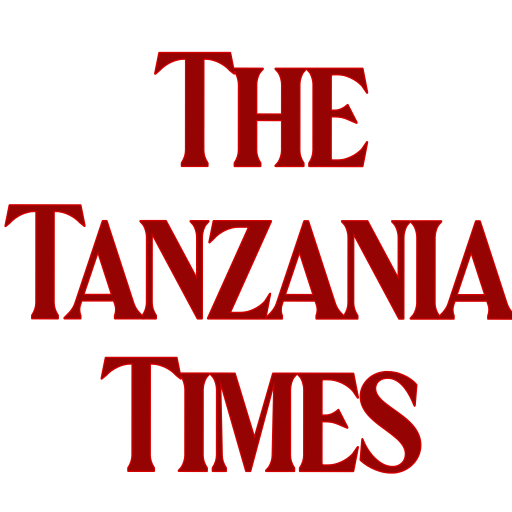Herds of elephants that used to traverse between Swaga Swaga Game Reserve in Dodoma and the Mount Hanang Forest Cover of Manyara have reportedly been marooned in one place for over four years now.
“There is a corridor which connects Swaga-Swaga Game Reserve in the Kondoa District of Dodoma to Mount Hanang Nature Forest Reserve, but this passage has been blocked by human settlements and farms cropping up in the middle, preventing the usual wildlife movement,” explained Dr Julius Keyyu a Zoological researcher.
Dr Keyyu who is a scientist working with the Arusha-based Tanzania Wildlife Research Institute (TAWIRI), said for more than four years now, elephants cannot migrate from Swaga-Swaga to Hanang, a route which also used to take the Jumbos to as far as Yaeda Chini valley in Mbulu.
As the Director of Research at TAWIRI, Dr Keyyu warned that the idea of elephants being marooned or confined in a single reserve in Kondoa, causes in-breeding among the Jumbos and eventually weakening the species.
The scientist was making a presentation during the first National Wildlife Corridors Forum, conducted in Dar-es-Salaam city under the theme of ‘Securing Wildlife Connectivity for Sustainable Conservation,’ attracting hundreds of researchers, conservators and other scientists.
He pointed out the importance of unblocking the corridor which links Swaga-Swaga GR in Kondoa, Dodoma to the Hananga Nature Forest Reserve located North of Katesh Township in Manyara Region.
The forest covers the slopes of Hanang, whose elevation of 3,676 meters above sea level makes it the fourth highest mountain in the country after Kilimanjaro, Meru and Loolmalasin.
The forest is the major source of water in Hanang District with important rivers and streams. Soils are Dark to grey brown and Reddish brown to orange red.
The reserve has oceanic rainfall with continental temperatures.
Other animals present in the forest include klipspringer, velvet monkeys, bush pigs, olive baboons, spotted hyena, leopards and a variety of snakes, birds and insects.
Measuring 871 square kilometers, Swaga-Swaga Game Reserve is mapped within Chemba and Kondoa Districts of Dodoma with parts of it falling into Singida Regiona and is strategically located 120 kilometers from Babati Municipality and 130 kilometers from Dodoma.
Wildlife corridors blockage has been described as the leading driver of Human-Wildlife Conflicts in Tanzania.
More than 28,000 people in 88 districts of Tanzania have been badly affected by Human-Wildlife Conflicts, with tens of thousands acres of farms being destroyed in the process.
The Minister of Natural Resources and Tourism, Angela Kairuki revealed that during the five-year period of between 2018 and 2022 over 5.5 billion/- have also been disbursed by the government as consolation payment to the affected families.
“But where lives are lost, they cannot be compensated, we can only offer them consolation, therefore conservators and other authorities must work together to address the increasing incidences of Human-Wildlife conflicts in the country,” pointed out the Natural Resources and Tourism Minister.
The Minister was addressing members of the delegation as she inaugurated the First National Annual Wildlife Corridor taking at the Julius Nyerere International Convention Center (JNICC), where for two days scientists, researchers, conservators and government officials will be discussing ways of restoring wildlife corridors in the country.

“Most cases of Human Wildlife Conflicts have been experienced in areas where people have encroached into natural corridors that animals use as their connectivity passages as they move from one reserve to another in search of their basic requirements, such as food, water, mineral licks or for breeding purposes,” Minister Kairuki maintained.
Other findings of the report are that though Tanzania has earmarked a total of 61 wildlife corridors that are operational, only two of these important natural connectivity passages have been officially listed in the Government gazette.
Tanzania has so far earmarked 61 wildlife corridors in the country with 41 such passages being highly threatened with extinction.
Members of the National Committee on Corridor restoration have earmarked 20 special corridors that will be given priority in restoration and conservation due to their biodiversity importance.
On the other hand the Minister directed that all villages located near corridors and other reserved areas should be assisted to undertake proper land use planning being one of the ways to avert Human-Wildlife conflicts and corridor encroachments.
The United States Agency for International Development (USAID) through the Tuhifadhi Maliasili Project is assisting in the restoration of seven wildlife corridors in the country through participatory approach by empowering local communities to that effect.
Among the connectivity routes, there is the Kwakunchinja Wildlife Corridor, connecting Tarangire – Manyara Ecosystems; the Tarangire -Simanjiro Plains, important dispersal areas for Tarangire National Park; the Kigosi Moyowosi – Uvinza Corridor, connecting Kigosi Moyowosi Complex and Ugalla complex.
Others are the Nyerere Selous – Udzungwa Corridor which links the Nyerere Selous and Udzungwa Mountains National Parks and the Pemba Channel Conservation Area (PECCA), a marine corridor off Pemba Island; Mahale – Katavi, as well as the Amani – Nilo Corridor, the forest corridor connecting Amani and Nilo Nature Forest Nature Reserves in Tanga.
But on the other hand, out of the 61 nationally identified corridors, only two of them have so far been gazetted.
It came to light during the forum that there are only two wildlife corridors that have been officially gazetted and these include the Kitendeni Wildlife Corridor linking Longido and West Kilimanjaro as well as the Mpanga-Kipengere, which despite having Government Notice (GN) is still in horrid condition.
The Maiden Annual Wildlife Corridor Forum was organized the government, through its conservation and research entities, in association with USAID, UNDP and Frankfurt Zoological Society (FZS)



